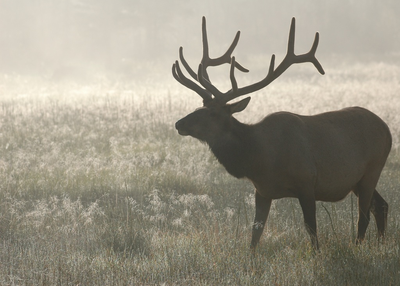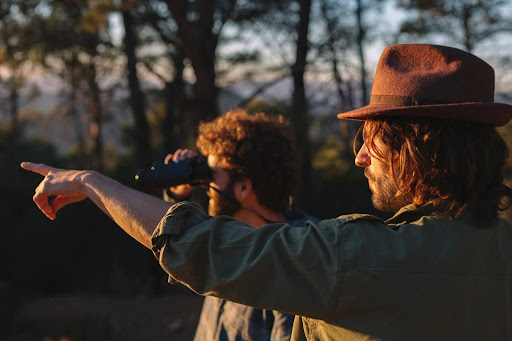

The most common questions concerning Kibale National Park can be found here. The best place to see domesticated chimpanzees in Africa is Kibale National Park. Chimpanzee trekking is done twice a day, in the morning and the afternoon. A total of 795 square kilometers make up Kibale National Park. Additionally, a variety of birds, including the rare shoe bill, call this tropical jungle home.
A 180 km long migration strip separates Queen Elizabeth National Park, which is located next to the southern portion of Kibale National Park, from these two protected regions. Elephants, duikers, warthogs, giant forest hogs, and other wild animals enter the forest to enjoy the flora while others go hunting there. This area's southernmost point is Ishasha, and its northernmost point is Kibale's Sebitoli Forest. Over 13 different primate species can be found at Kibale National Park, including the black-and-white colobus, olive baboons, Bushbaby, red-tailed monkeys, and grey-cheeked mangabey, and many others. We are going to discuss several questions frequently asked by travelers.
Where is the location of Kibale National Park?
In the western region of Uganda, in East Africa, is the Kibale National Park. Kibale is one of Uganda's largest primate habitats and a very beautiful tropical forest. The majority of the park is covered with forest, particularly in the northern and central regions around the Fort Portal plain. The park is located 1590 meters above sea level. The Kibale forest's variable altitude provided cozy habitats for a variety of wild species, including monkeys, forest elephants, duikers, enormous forest hogs, a variety of birds, and warthogs, and many more. The forest is made up of savannah and woodlands close to the rift valley floor, dry tropical forest on the Fort Portal plateau, and wet tropical forest. Rainfall in Kibale National Park varies, with the northern part receiving the most at roughly 1700mm. March through May and November are the wettest months in the park. Kibale National Park is located in the Ndali to Kasenda vista gold mine. The view of Kyaninga Lake is only one of the breathtaking panoramas.
Things to do in Kibale National Park
Chimpanzee trekking
The primary activity in Kibale National Park is chimpanzee trekking. There are two shifts available: shifts for chimpanzee trekking in the morning and in the afternoon. The chimpanzees may see you before you find them if you follow them with the ranger guide. They run a spy system that alerts the others to your presence. You can also accompany partially wild chimpanzees in the forest and acclimate them to human presence through the Chimpanzee Habituation program. Particularly from March through May or November, when fewer tourists are visiting, this is done. You get up early in the morning 05:00 to 06:30 hours to observe the chimpanzees removing their nests. Follow them till the period of nighttime nesting. Red-tailed monkeys, vervet monkeys, black and white colobus, grey-cheeked mangabey, olive baboons, bush babies, L'Hoest's, and other primates also spend the day in the forest. More of these amazing primates can be seen if you travel to Bigodi Swamp.
Optional activities to do while In Kibale National park
a.) Bird watching
A diverse birdlife, including species native to Albertine, resides in this tropical rainforest. Water birds like the shoe bill find refuge in environments with abundant foliage, such as swamps. From the Kanyanchu Visitor Center to the bridge, the main route offers the best opportunities for forest birding. Black-crowned Waxbills, Scaly Francolins, Grey-headed olive-backs, and Black and White Mannikins are a few of the birds you might see in Kibale National Park.
b.) Community Walks
Kihingani Wetland Walk
On the outskirts of the Sebitoli region of Kibale National Park, you pass through the Kihingani wetland. You learn to recognize a variety of birds that spend the day in the swamp.
Bigodi Wetland Sanctuary walk
On the fringes of the park near Magombe Swamp, there is a community walk. You have a greater possibility of seeing primates during this trip, including black-and-white colobus, vervet monkeys, red-tailed monkeys, olive baboons, and others.
Other forest species like bush deer, otters, mongooses, and sitatunga frequent this marsh as well.
A staggering 138 different species of birds spend the day in the woodland. These are visible from the boardwalk trail and the view platform.
Which activities children can participate in while adults are trekking Chimpanzee?
When traveling with a family that includes children under the age of 12, many queries arise over whether they will be allowed to participate in the woodland adventures. Children under the age of 12 can still participate in park activities even though they are not allowed to go chimpanzee trekking. The kids go on a one to two-hour educational walk with their personal ranger guide, learning about birds, flora, tiny animals that aren't dangerous, and monkeys. They gain firsthand knowledge of the ecosystem's inhabitants. They participate in entertaining activities including cyanotype, photography, batik creation, and pond dipping. You may relax knowing that the kids will be taken care of while you go chimpanzee trekking.
Accommodation in Kibale National Park
It's lovely to spend the night within or outside of Kibale National Park since you can feel the cool breeze of the forest. There are numerous lodging options available, ranging from luxurious to modest. The following accommodations are available: Chimps Nest, Primates Lodge, Ndali Lodge, Kibale Safari Lodge, Kyaninga Lodge, Mountains of the Moon Hotel, and Virika Guest House. The majority of these establishments provide full board services, and the ones that don't also include restaurant services.
How to go to Kibale National Park
By Domestic flights
A transfer vehicle is required to get reach Kibale National Park after daily domestic flights from Entebbe or Kajjansi Airstrip to Kasese Airstrip. These run daily flights in the morning and the afternoon. Upon request, charter flight arrangements can be made.
By Vehicle
Kampala - Mbarara - Kamwenge
This road passes Queen Elizabeth National Park before heading to Sebitori Forest Camp, Kibale National Park's other major tourist destination.
Kampala - Mubende - Fort Portal
The northern way to Kibale National Park is via this. Fort Portal town is reached after 300 miles of tarmac and 36 meters of murram driving in around 4 hours. The choice to spend the night in Fort Portal and go chimpanzee trekking in Kibale National Park is yours.
What to prepare for a Chimpanzee Trek in Kibale National Park
A set of binoculars so you can see the chimpanzees more clearly, especially during the very wet season when they are feeding from the tops of trees. Energy snacks to keep you active as you look for the chimpanzees when chimpanzees and other forest creatures come into view, a camera with a good lens can catch those moments. Try not to carry long pants or shirts with sleeves in khaki or other dirt-friendly colors, as well as army camouflage, as these are prohibited in Uganda. Your skin will feel comfortable using insect repellant, which will shield you from mosquito bites. Stinging insects from the jungle wander the park all day. The comfort of tracking boots allows you to move through the forest without slipping or getting poked by protruding objects. Devices that are waterproof are necessary because this is a tropical rain forest where it may rain at any time.
What Season Is Best To Visit Kibale National Park?
Because the chimpanzees forage closer to the ground in the drier months of June to September and December, Kibale National Park is best visited during those times. Chimpanzee trekking is possible year-round, even from March to May or November, but be prepared for some showers when looking for the primates.
What is the cost of chimpanzee trekking permit in Kibale National Park?
In Kibale National Park, chimpanzee trekking licenses cost foreign non-residents $200 per person per trek, foreign residents $150, and inhabitants of east Africa Ugsh 100,000. The Uganda Wildlife Authority is responsible for issuing these licenses.
What Is The Duration Of The Chimpanzee Trek In Kibale National Park?
In Kibale National Park, there are two chimpanzee trekking shifts per day, one in the morning and one in the afternoon. Chimpanzee trekking may take between 3 and 5 hours in the jungle, with a maximum of 6 individuals per group, depending on the forest's circumstances. You proceed down the same path where the chimpanzees were last seen. The chimpanzees can only remain with you for an hour after you find them so they may keep eating. They require unhindered feeding time.
What is the level of safety at Kibale National Park?
Given that Kibale National Park is a forest park, safety concerns are raised. All types of activities, including chimpanzee trekking, nature hikes, and birding, are safe to do at Kibale. Tourists assemble at the visitor center (Kanyanchu or Sebitori) for a briefing before beginning any activities. This will arm each individual with knowledge about the forest's residents, including chimpanzees, forest elephants, duikers, and many more. Without a ranger, never enter the forest.
To avoid getting lost in the forest, it would be best if you stuck with the rest of the gang. While not dragging the group as a whole, the ranger guide keeps up with the slowest hiker.
What Do Chimpanzees Eat
Although chimpanzees are typically vegetarian, they may feed on monkeys in times of great scarcity and drought. This is especially unusual in a park with as much flora as Kibale Forest. Please get in contact with Dav Safaris for additional information about frequently asked questions about Kibale National Park, as well as to learn more about what we do and what other people have to say about our service.
Book Chimpanzee trekking with Dav Safaris
Dav safaris is experienced in organizing amazing African Safari experiences to Uganda , Rwanda , Kenya, and Tanzania, . We have overtime assembled a team mixed with young and energetic staff guided by well experienced mature managers and directors who are local guides to our destinations. If contacted, one of our staff will assist in providing accurate and timely information that you can rely on as soon as possible. Visit our Website www.davsafaris.com for a customized Wildlife safari or email us at [email protected]



























